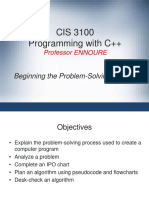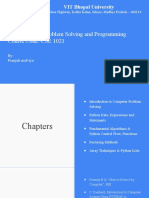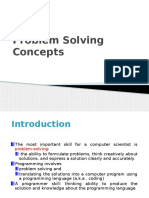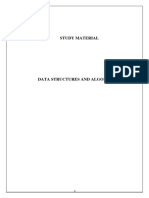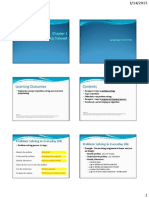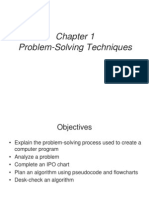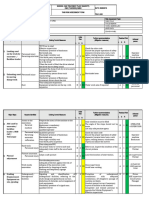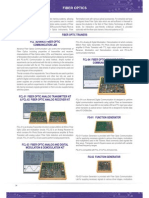0% found this document useful (0 votes)
78 views37 pagesChapter2 2
1. The programming life cycle involves 7 key phases: specify the problem, analyze the problem, design the algorithm, implement the algorithm, test and verify the program, maintain and update the program, and document the program.
2. To design the algorithm, tools like structure charts, IPO charts, flowcharts and pseudocode can be used to represent the logic of the solution in a clear manner before implementing it in a programming language.
3. After implementing the algorithm, testing is important to identify any bugs or errors in the program's logic or code through methods like blackbox and whitebox testing.
Uploaded by
intensityCopyright
© © All Rights Reserved
We take content rights seriously. If you suspect this is your content, claim it here.
Available Formats
Download as PDF, TXT or read online on Scribd
0% found this document useful (0 votes)
78 views37 pagesChapter2 2
1. The programming life cycle involves 7 key phases: specify the problem, analyze the problem, design the algorithm, implement the algorithm, test and verify the program, maintain and update the program, and document the program.
2. To design the algorithm, tools like structure charts, IPO charts, flowcharts and pseudocode can be used to represent the logic of the solution in a clear manner before implementing it in a programming language.
3. After implementing the algorithm, testing is important to identify any bugs or errors in the program's logic or code through methods like blackbox and whitebox testing.
Uploaded by
intensityCopyright
© © All Rights Reserved
We take content rights seriously. If you suspect this is your content, claim it here.
Available Formats
Download as PDF, TXT or read online on Scribd
/ 37












